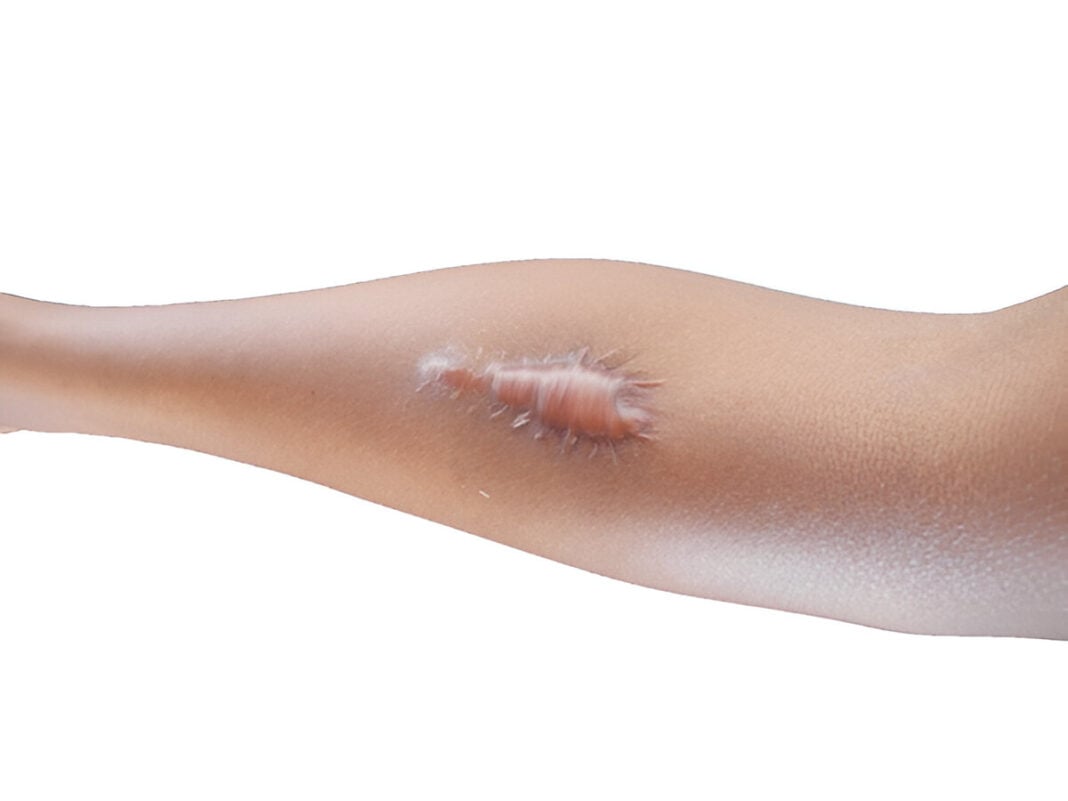Scars can tell us a lot about our past, the injuries we’ve had and how our bodies have healed. Among the different kinds of scars, keloid scars stand out because they behave differently from regular scars. Instead of fading away over time, keloids keep growing beyond the edges of the original wound. This can make them uncomfortable or even upsetting to look at. If you’ve ever wondered why keloids happen and what can be done about them, you’re in the right place. Let’s dive into what causes keloids and how they can be treated.
What Are Keloid Scars?
Keloids are raised, thick scars that extend past where the skin was first injured. Unlike hypertrophic scars, which are raised but stay within the original wound boundaries, keloids can spread onto healthy skin. They often look shiny and firm and can be pink, red, or even dark brown. Sometimes they itch or hurt. Unlike most scars that flatten and soften over time, keloids often keep growing and don’t go away on their own. This can sometimes affect how you move or how you feel about your appearance.
Why Do Keloids Form?
The reason keloids form is because the skin’s healing process goes a little overboard. When you get a cut or injury, your body works hard to repair the damage by producing collagen, a protein that gives your skin strength. Normally, this process is well controlled, and the scar gradually becomes less noticeable. But with keloids, the skin produces too much collagen, leading to that thick, raised scar (Niessen et al., 1999).
There are several factors that make someone more likely to develop keloids:
- Genetics: Some people are naturally more prone to keloids. This is especially true for people with darker skin tones, including those of African, Hispanic, or Asian heritage. A family history of keloids also increases your chances (Shih & Bayat, 2010).
- Skin Injuries: Keloids can develop from any skin injury such as cuts, burns, piercings, surgery, acne, or even insect bites.
- Body Location: Keloids often form on the chest, shoulders, upper back, and earlobes, areas where the skin might be tighter or under more tension during healing.
- Age: Younger people, particularly those between 10 and 30 years old, are more likely to get keloids.
Even though keloids aren’t dangerous to your health, they can cause discomfort and impact your confidence (Alster & Graham, 1998).
How Can Keloid Scars Be Treated?
Treating keloids can be challenging because they often resist treatment and sometimes come back after being removed. Thankfully, there are many options available today that can help improve their look and feel.
1. Corticosteroid Injections
Doctors often start treatment by injecting steroids directly into the keloid. These injections reduce inflammation and slow down the extra collagen production, which helps flatten the scar over time. This usually requires several sessions spaced a few weeks apart (Gupta & Kalra, 2015).
2. Silicone Gel Sheets and Dressings
Silicone gel sheets are a simple, non-invasive way to help flatten keloids. They keep the scar moist, which softens and smooths the skin. Using them regularly over several months can show good results (Dieng et al., 2011).
3. Cryotherapy
This method freezes the keloid with liquid nitrogen, causing the scar tissue to die off and fall away. It works best on smaller keloids but might temporarily lighten the skin where it’s applied (Rohrich et al., 2007).
4. Laser Therapy
Lasers target the blood vessels in the keloid, reducing redness and helping to flatten the scar. It’s often combined with other treatments to get better results (Huang et al., 2018).
5. Surgical Removal
Sometimes keloids are surgically removed. However, surgery alone is risky because the keloid often grows back, sometimes even larger than before. That’s why surgery is usually combined with injections or radiation afterward to lower the chance of recurrence (Alster & Graham, 1998).
6. Radiation Therapy
Radiation is sometimes used after surgery to stop the cells that cause keloids from growing back. While effective, it must be used carefully due to potential side effects (Gupta & Kalra, 2015).
7. New Treatments
Scientists are exploring other treatments like interferon, 5-fluorouracil, and Botox injections. These are promising but not yet widely used as standard care (Huang et al., 2018).
Living with Keloids
Keloids can affect how you feel emotionally and physically. If you have one or more, here are some tips:
- Talk to a dermatologist early on to get the best advice tailored for you.
- Try to avoid unnecessary skin injuries, especially in areas prone to keloids.
- Be patient—treating keloids usually takes time and persistence.
- Don’t hesitate to seek support if your scars affect your confidence or mental health.
References
- Alster, T. S., & Graham, P. M. (1998). Treatment of keloids and hypertrophic scars. American Journal of Clinical Dermatology, 10(5), 215–222. https://doi.org/10.2165/00128071-200310050-00002
- Dieng, M., Soumboundou, M. M., & Touré, S. A. (2011). Silicone gel sheeting for hypertrophic scars and keloids. Journal of Wound Care, 20(4), 176–179. https://doi.org/10.12968/jowc.2011.20.4.176
- Gupta, S., & Kalra, A. (2015). Keloids and hypertrophic scars: Review and treatment options. Indian Journal of Dermatology, 60(3), 259–272. https://doi.org/10.4103/0019-5154.156342
- Huang, C., Wang, D., Xu, H., & Zhang, Y. (2018). Advances in the treatment of keloid scars. Burns & Trauma, 6, 15. https://doi.org/10.1186/s41038-018-0115-3
- Niessen, F. B., Spauwen, P. H., Schalkwijk, J., & Kon, M. (1999). On the nature of hypertrophic scars and keloids: A review. Plastic and Reconstructive Surgery, 104(5), 1435–1458. https://doi.org/10.1097/00006534-199911000-00026
- Rohrich, R. J., Sullivan, C. C., & Davis, J. A. (2007). Keloids and hypertrophic scars: A review of pathophysiology, classification, and treatment. Plastic and Reconstructive Surgery, 120(7), 65S–74S. https://doi.org/10.1097/01.prs.0000287036.81708.7f
- Shih, B., & Bayat, A. (2010). Genetics of keloid scarring. Archives of Dermatological Research, 302(5), 319–339. https://doi.org/10.1007/s00403-010-1030-5








